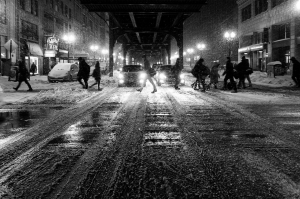|
The publication has been around since 1818, and has provided
weather forecasts since day one.
Editor Sandi Duncan said many factors go into their weather
forecasting, including celestial events and the impact of a La
Nina weather pattern.
“We also look at sun spot activity, the motion of the moon and a
variety of other proprietary factors,” said Duncan.
She said Illinois can expect a winter that is cold, wet and
white. Above-average precipitation is forecasted for the eastern
third of the U.S., including the Great Lakes, Ohio Valley and
Midwest. Her publication is red flagging the last week of
January for most of the eastern half of the U.S. as they expect
an active storm track that will dump frequent bouts of heavy
precipitation.
Last winter’s strange anomalies were driven by an El Niño event,
but this year’s steadier La Niña influence should bring more
consistent winter weather patterns.
While the Almanac predicts the coldest temperatures to be in the
Great Lakes region, according to the National Oceanic and
Atmospheric Administration, Illinois could see slightly above
average temperatures from December through February.
Duncan noted that the Farmers Almanac hit on some of its
predictions for last winter, including heavy snow from Colorado
to the Plains that threatened Christmas travel.
“We do try to remind everybody that not anyone is 100% accurate
and Mother Nature likes to throw out the first few curveballs as
well as she likes to unravel her mysteries,” said Duncan. |
|




